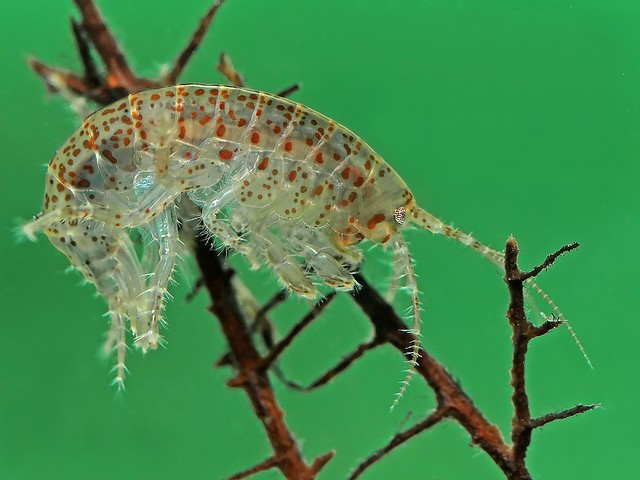
amphipod tiff spotted edit colour_filtered unsharpen_filtered by ernie.cooper, on Flickr
It has been waaaaay too long since I posted any photos. Funny how life can speed-up and suck all your time—especially over Christmas holidays when you have kids! Anyhow, I’m back and after a 2-week hiatus I have finally posted some photos on my blog of freshwater amphipods (that I took last summer). The photo above is of a very pretty specimen of Gammarus lacustris; apparently the only species of freshwater gammarid amphipod found in British Columbia.
Whenever (and wherever) I have collected freshwater Gammarus in the past, they have been coloured drab shades of brown and olive green. But as you can see, the specimensIcollectedfrom this particular stream showed some real diversity in colouration, including some really pretty specimens with bright red spots on a translucent yellowish body. Others had a single very obvious bright red spot on their side. I still don’t know if the spot was on the critter’s exoskeleton or was something inside the body…

amphipod red spot sharpened copyright ernie cooper_filtered by ernie.cooper, on Flickr
I really need to get back to that stream again this summer to collect more of these crittersand do a better job of photographing them…
Cheers,
EC
www.macrocritters.wordpress.com






